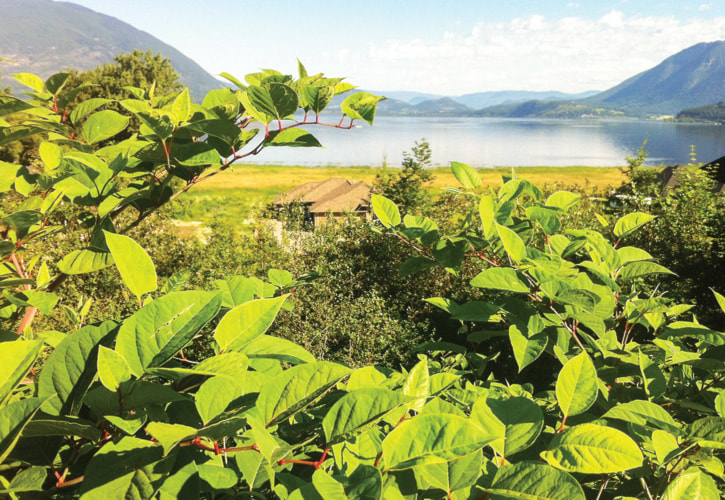Shuswap residents are encouraged to be on the lookout for, and help remove knotweed.
The plant is an incredibly invasive perennial, and is classified as “noxious” under the BC Weed Control Act.
There are four species of knotweed found in B.C.: Bohemian, Japanese, Himalayan, and giant.
Originally brought over from Asia to be used as an ornamental plant due to its bamboo-looking stems, there are several backyards where this plant still remains. Gardeners in the region likely share this plant unknowingly, and it has been nicknamed false bamboo.
Knotweed has been found throughout Canada and B.C., including the Revelstoke, Shuswap and Columbia regions.
This invader grows extremely large and fast – with reports of it growing more than six centimetres per day (the stems can grow up to five metres in height).
Knotweed roots can grow up to three-metres deep. If stem or root fragments are left behind or mowed, it can re-sprout, making it difficult to eradicate.
Knotweeds are a serious ecological threat to our native biodiversity and habitats. Additionally, many social and economic impacts can result from a knotweed infestation, including property or infrastructure damage.
What can you do if you find knotweed?
Getting rid of knotweed will take hard work and dedication, but it is possible. Many organizations discourage manual removal or digging because any small fragments can re-grow into several more plants.
One of the most effective treatments is to use a specially-selected herbicide that, when applied by a certified pesticide applicator, will attack knotweed’s deep root-systems.
If any plant material is removed, it should be taken to the landfill for deep burial. Disposal should be done carefully and responsibly in sealed bags so that plant material is not spread while being transported.
More tips for knotweed management can be found a www.knotonmyproperty.com, and at http://bcinvasives.ca/documents/Knotweeds_TIPS_Final_08_06_2014.pdf.
To keep your community knotweed-free, spread awareness and keep an eye out for this invasive plant.
The Columbia Shuswap Invasive Species Society (CSISS ) is a non-profit organization dedicated to the prevention, management and reduction of invasive species in the Columbia Shuswap Regional District.
CSISS is thankful for the generous support of the Columbia Basin Trust, the Columbia Shuswap Regional District, the Ministry of Forests, Lands and Natural Resource Operations, and the Ministry of Transportation and Infrastructure.
To learn more about invasive species in the Columbia Shuswap region, visit: http://www.columbiashuswapinvasives.org.
